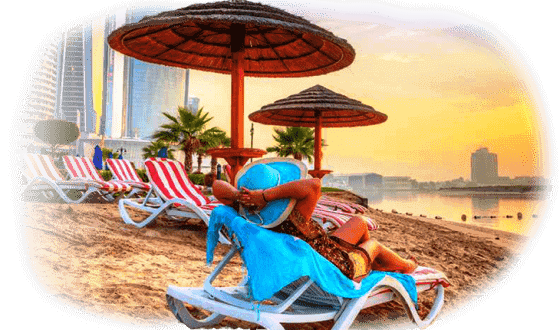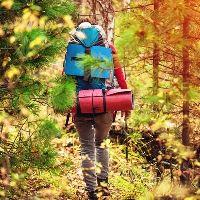Plan your Kenyan Tour and Trip Comfortably - Best Advice

Preparing for a safari trip to Kenya means weighing a lot of factors that might take a lot of your time. Why not talk to a resourceful local consultant like Homejoy Safari Adventures & get set up smoothly for your Kenya Safari tour?



Ensure to Make new discoveries and learn new things
Climbing Mount Kenya: Routes, Guides, and What You Need to Know
Mount Kenya, Africa’s second-highest peak, offers a thrilling adventure for climbers of all levels, from beginners looking for scenic treks to experienced mountaineers seeking technical challenges. This iconic mountain is a UNESCO World Heritage Site and a prime destination for trekking, mountaineering, and nature exploration. Rising to an elevation of 5,199 meters (17,057 feet), Mount Kenya is home to three main peaks: Batian, Nelion, and Lenana, with Point Lenana being the most accessible for non-technical climbers. The mountain’s diverse terrain includes dense bamboo forests, alpine meadows dotted with giant lobelias, and dramatic rock formations leading to its jagged, ice-capped summits. Hikers pass through multiple ecological zones, from lush rainforests teeming with unique wildlife such as colobus monkeys and elephants, to the barren and rugged high-altitude landscapes with stunning glacier formations. With multiple climbing routes, varied challenges, and breathtaking panoramic views, Mount Kenya provides an unforgettable hiking and trekking experience. Whether you are looking for a leisurely trek through rich biodiversity, a multi-day expedition through remote wilderness, or a technical climb to the towering peaks of Batian and Nelion, Mount Kenya offers an experience like no other. Each route presents different attractions, from the scenic Chogoria waterfalls and breathtaking Gorges Valley to the direct yet steep Naro Moru ascent. Climbers will experience changes in climate zones, from tropical rainforests to harsh glacial landscapes, making every step a remarkable journey through nature’s extremes. The high-altitude environment presents challenges such as rapid weather changes and altitude sickness, making preparation and acclimatization key factors for a successful climb. This guide explores the best routes, essential gear, acclimatization strategies, and key considerations for a successful ascent. It also highlights why Mount Kenya remains one of Africa’s most rewarding trekking destinations, offering unparalleled natural beauty, a sense of adventure, and an immersive wilderness experience that rivals any other mountain expedition in the world.
| Route | Difficulty Level | Duration (Days) | Summit Point | Highlights |
|---|---|---|---|---|
| Sirimon Route | Moderate | 5-6 | Lenana Peak | Gradual ascent, scenic forests, diverse wildlife |
| Naro Moru Route | Difficult | 4-5 | Lenana Peak | Fastest but steepest route, vertical bog |
| Chogoria Route | Moderate to Hard | 5-6 | Lenana Peak | Most scenic, waterfalls, valleys, fewer crowds |
Do You Need a Guide to Climb Mount Kenya?
 Yes, while it is possible to hike Mount Kenya independently, hiring a certified guide is highly recommended for safety, navigation, and local insights. Guides possess an in-depth understanding of the terrain, weather conditions, and the best acclimatization strategies to ensure climbers have a safe and enjoyable experience. They can also help prevent altitude sickness by setting a steady pace and advising on hydration and rest breaks. Additionally, Homejoy Safari Adventures collaborates with guides that you assist with logistics, including campsite arrangements, meal preparations, and coordination with park authorities. This allows climbers to focus on the journey rather than worrying about technicalities such as permits and route planning. Many guides are also trained in first aid and high-altitude rescue techniques, offering an extra layer of security in case of emergencies. Hiring porters can also enhance the experience by reducing the load on climbers, allowing them to focus on the physical and mental demands of the ascent. Porters carry tents, food supplies, and essential gear, making the trek more comfortable, especially for those not accustomed to carrying heavy backpacks at high altitudes. Additionally, working with local guides and porters supports the local economy and provides employment opportunities for communities surrounding Mount Kenya. For those attempting technical ascents of Batian or Nelion, hiring a specialized climbing guide with mountaineering expertise is essential. These guides are equipped with the necessary skills and gear to assist climbers in navigating the challenging rock faces safely. Regardless of the chosen route, having an experienced guide enhances the overall climbing experience and increases the chances of a successful summit attempt.
Yes, while it is possible to hike Mount Kenya independently, hiring a certified guide is highly recommended for safety, navigation, and local insights. Guides possess an in-depth understanding of the terrain, weather conditions, and the best acclimatization strategies to ensure climbers have a safe and enjoyable experience. They can also help prevent altitude sickness by setting a steady pace and advising on hydration and rest breaks. Additionally, Homejoy Safari Adventures collaborates with guides that you assist with logistics, including campsite arrangements, meal preparations, and coordination with park authorities. This allows climbers to focus on the journey rather than worrying about technicalities such as permits and route planning. Many guides are also trained in first aid and high-altitude rescue techniques, offering an extra layer of security in case of emergencies. Hiring porters can also enhance the experience by reducing the load on climbers, allowing them to focus on the physical and mental demands of the ascent. Porters carry tents, food supplies, and essential gear, making the trek more comfortable, especially for those not accustomed to carrying heavy backpacks at high altitudes. Additionally, working with local guides and porters supports the local economy and provides employment opportunities for communities surrounding Mount Kenya. For those attempting technical ascents of Batian or Nelion, hiring a specialized climbing guide with mountaineering expertise is essential. These guides are equipped with the necessary skills and gear to assist climbers in navigating the challenging rock faces safely. Regardless of the chosen route, having an experienced guide enhances the overall climbing experience and increases the chances of a successful summit attempt.
Where are the Best Routes to Climb Mount Kenya
There are three main trekking routes to Mount Kenya’s summit, each offering unique scenery and varying difficulty levels. Choosing the best route depends on your fitness level, experience, and preferences for scenery and challenge. The Sirimon Route is known for its gradual ascent, making it ideal for those who prefer a less strenuous climb with a rich diversity of wildlife and vegetation. Naro Moru Route is the fastest but steepest, often chosen by experienced trekkers seeking a more direct approach to the summit, though it presents challenges like the infamous "Vertical Bog." Chogoria Route is considered the most scenic, with breathtaking waterfalls, lush valleys, and fewer crowds, making it perfect for adventurers who want to enjoy the beauty of the mountain at a more relaxed pace. Each route has distinct advantages, and understanding their characteristics helps climbers make the right choice for a rewarding experience of the epic hikes and wildlife experiences in Mount Kenya.
- Sirimon Route: This route is known for its gradual ascent, making it ideal for those who prefer a less strenuous climb with a rich diversity of wildlife and vegetation. It offers excellent acclimatization opportunities and passes through scenic forests, moorlands, and alpine meadows. Sirimon is also popular for its relatively dry conditions, reducing the likelihood of encountering muddy or slippery paths. The route provides an excellent balance between a challenging climb and enjoyable scenery, making it suitable for both beginners and experienced trekkers looking for a scenic experience.
- Naro Moru Route: Known as the fastest way to reach Point Lenana, the Naro Moru Route is often chosen by climbers seeking a direct path to the summit. However, it is also the steepest and most challenging route, featuring the infamous "Vertical Bog," a section with deep mud that can be difficult to traverse. This route requires a higher level of fitness and endurance, as the rapid altitude gain increases the risk of altitude sickness. Despite its challenges, Naro Moru is favored by adventurers who want to reach the summit quickly and experience breathtaking sunrise views from the top.
- Chogoria Route: Considered the most scenic of the three, Chogoria Route offers breathtaking waterfalls, lush valleys, and dramatic landscapes. This route provides a more gradual ascent, making it an excellent choice for climbers who prefer a longer, more immersive trekking experience. The route features highlights such as Lake Ellis and the Gorges Valley, providing opportunities for stunning photography and wildlife sightings. Although it is slightly longer, the scenic beauty and lower foot traffic make Chogoria a preferred option for those looking to enjoy Mount Kenya’s diverse landscapes in a peaceful environment.
Each route has distinct advantages, and understanding their characteristics helps climbers make the right choice for a rewarding experience. Whether prioritizing speed, ease of ascent, or breathtaking scenery, selecting the appropriate route is essential to ensuring a successful and enjoyable trek.
How Difficult Is Climbing Mount Kenya?
Climbing Mount Kenya is challenging but achievable for most hikers in good physical condition. The trek involves steep ascents, high-altitude conditions, and variable weather, making it essential to prepare adequately. Lenana Peak (4,985m) is the most accessible summit, suitable for trekkers without technical climbing experience, while Batian (5,199m) and Nelion (5,188m) require advanced rock climbing skills and technical expertise. For those attempting Lenana Peak, the biggest challenge is adjusting to high altitudes. As climbers ascend beyond 3,500m, the oxygen levels drop, increasing the risk of altitude sickness. Symptoms such as headaches, dizziness, and nausea can occur, so acclimatization days and a gradual ascent are highly recommended. Staying hydrated and maintaining a steady pace also improve success rates. Weather conditions on Mount Kenya can change rapidly. Mornings are often clear and sunny, while afternoons bring clouds, rain, or even snowfall. Proper layering is crucial to staying warm and dry. Wind speeds also increase at higher elevations, adding another layer of difficulty to the climb. Steep sections, particularly on the Naro Moru and Chogoria Routes, demand strong leg endurance and balance. Some parts require scrambling over rocky terrain, especially near the summit. For those aiming for Batian and Nelion, professional mountaineering gear, including ropes and harnesses, is necessary, and experienced guides are essential for safe navigation. Despite these challenges, Mount Kenya remains a highly rewarding climb. The stunning views, diverse ecosystems, and the sense of accomplishment make it a bucket-list adventure for trekkers and climbers worldwide.
How Long Does It Take to Climb Mount Kenya?
The duration of a Mount Kenya climb depends on several factors, including the chosen route, acclimatization needs, and the physical fitness of the climber. While some routes allow for a rapid ascent in as little as four days, others provide a more gradual and scenic experience, stretching over five to six days. For those aiming to conquer the technical peaks of Batian or Nelion, the climb can take up to seven days due to the complexity of the terrain and the need for technical climbing expertise. Our 7-day hiking package ensures you get an unforgettable experience climbing the Batian peak. Understanding the time required for each route helps climbers plan their trek effectively, ensuring a safe and enjoyable experience.
-
Fastest Ascent: The Naro Moru Route is the fastest way to summit Mount Kenya, typically taking four days. It is favored by experienced climbers and those on a tight schedule. However, this route is known for its steep and direct approach, particularly the infamous "Vertical Bog," which can be exhausting. Climbers using this route must be well-prepared for the rapid altitude gain, as there is limited time for acclimatization. While the shorter duration is appealing, it increases the risk of altitude sickness, making it crucial for trekkers to be in excellent physical condition. To enhance success, climbers are advised to hydrate frequently, pace themselves appropriately, and listen to their bodies for any signs of altitude sickness. The final ascent to Point Lenana via this route is steep and icy, requiring careful navigation and an early start to reach the summit at sunrise.
-
Recommended Duration: For those looking for a more gradual and scenic climb, the Sirimon and Chogoria routes are the best options. These routes allow for better acclimatization, reducing the chances of altitude sickness and increasing summit success rates. The Sirimon Route is the most popular, as it offers a moderate ascent through lush forests and scenic alpine landscapes. It is a great choice for those who prefer a steadier climb while still experiencing Mount Kenya’s breathtaking beauty. The Chogoria Route, on the other hand, is widely regarded as the most scenic, featuring stunning waterfalls, valleys, and diverse wildlife. It provides an immersive trekking experience with fewer crowds and a gradual elevation gain. These routes take five to six days, providing trekkers with ample time to adjust to the altitude, making them suitable for both beginners and seasoned climbers. Nights are spent in mountain huts or tents, and the longer duration allows for a more enjoyable and less strenuous trek to the summit.
-
Technical Climbs (Batian & Nelion): For experienced mountaineers looking for a technical challenge, summiting Batian (5,199m) or Nelion (5,188m) requires specialized climbing skills, proper gear, and a professional guide. These peaks involve rock climbing, requiring the use of ropes, harnesses, and technical climbing techniques. Climbers attempting these routes typically take six to seven days, as additional time is needed for acclimatization and the technical ascent. The North Face Standard Route on Batian is one of the most popular choices for climbers, offering exhilarating rock climbing challenges with breathtaking views. The weather conditions on these peaks can be unpredictable, adding another layer of difficulty to the climb. Due to the technical nature of these summits, climbers must have prior experience with high-altitude mountaineering and rock climbing. Proper preparation, physical conditioning, and guidance from experienced professionals are essential for a successful ascent of these peaks.
What Are the Altitude Challenges When Climbing Mount Kenya?
Altitude sickness is a common concern when ascending above 3,500m, as the body must adapt to the reduced oxygen levels at higher altitudes. The drop in oxygen saturation can significantly affect physical performance and cognitive function, leading to symptoms such as headaches, dizziness, nausea, shortness of breath, and general fatigue. In severe cases, altitude sickness can progress to life-threatening conditions like High Altitude Pulmonary Edema (HAPE) or High Altitude Cerebral Edema (HACE), making it crucial for climbers to recognize symptoms early and take preventative measures. Understanding how to mitigate these risks through proper acclimatization, hydration, nutrition, and pacing is essential for a successful and safe climb. Additionally, being aware of personal limitations and knowing when to descend can make the difference between a safe journey and a medical emergency on the mountain. By preparing adequately and following best practices, climbers can enhance their endurance, minimize discomfort, and increase their chances of reaching the summit safely.
Understanding Altitude Sickness and Its Symptoms
Altitude sickness, also known as acute mountain sickness (AMS), occurs when the body struggles to adapt to the lower oxygen levels at higher elevations. Symptoms can appear as early as 3,000m and intensify with continued ascent. The three levels of altitude sickness include:
-
Mild AMS: Symptoms include headaches, dizziness, fatigue, loss of appetite, and difficulty sleeping. This stage is common but manageable with proper acclimatization.
-
Moderate AMS: Symptoms become more severe, including nausea, vomiting, persistent headaches, and increased difficulty in breathing. Descending to a lower altitude and allowing time for recovery is recommended.
-
Severe AMS: This condition can lead to life-threatening complications such as High Altitude Pulmonary Edema (HAPE) or High Altitude Cerebral Edema (HACE), requiring immediate descent and medical intervention.
How to Reduce the Risks of Altitude Sickness
To minimize altitude-related complications and improve acclimatization, climbers should adopt a strategic approach to their ascent. The effects of high altitude can be unpredictable, even for experienced mountaineers, so gradual progression is key. Proper acclimatization is the body's way of adjusting to reduced oxygen levels, and the process varies from person to person. Understanding how altitude affects the body and implementing effective measures can greatly enhance the chances of a successful summit attempt. With our expertise help, you can plan your itinerary to allow sufficient time for acclimatization, as rapid ascent increases the risk of acute mountain sickness (AMS). Staying well-hydrated, consuming energy-rich foods, and maintaining a steady pace are essential for preventing altitude-related complications. Additionally, taking prescribed medication, if needed, and monitoring oxygen levels can provide an added layer of safety. By these strategies into their climb, trekkers can optimize their physical performance, reduce fatigue, and improve overall endurance. The following precautions will help mitigate altitude sickness and ensure a safer, more enjoyable experience while climbing Mount Kenya:
- Acclimatize properly with gradual ascents: The "climb high, sleep low" principle is essential for preventing altitude sickness. Climbers should ascend gradually, allowing their bodies to adjust to lower oxygen levels. Spending additional nights at intermediate elevations before pushing higher can help the body acclimatize effectively. It is recommended to limit altitude gains to 300-500 meters per day once above 3,000m.
- Stay hydrated and maintain a steady pace: Dehydration can exacerbate altitude sickness symptoms, so it is crucial to drink at least 3-4 liters of water per day. Proper hydration helps maintain blood oxygen levels and reduces the likelihood of headaches and dizziness. Additionally, a steady, controlled pace while trekking prevents overexertion and minimizes respiratory strain.
- Consider altitude sickness medication if necessary: Acetazolamide (Diamox) is commonly used to speed up acclimatization and mitigate AMS symptoms. This medication helps the body adjust to high altitudes by increasing breathing rates and reducing fluid buildup in the lungs. However, it is best to consult a doctor before using altitude medication, as side effects such as tingling sensations in the fingers and increased urination may occur.
- Include an extra acclimatization day in your itinerary: Taking additional rest days at strategic elevations allows the body to naturally adjust to altitude changes. Many climbers schedule a full rest day after every 1,000 meters of elevation gain to help prevent AMS. These days are also great for short hikes to higher elevations before descending to sleep, reinforcing the acclimatization process.
- Eat a high-carbohydrate diet: At high altitudes, the body burns more energy due to increased respiration and physical exertion. Carbohydrates are the most efficient fuel source at altitude since they require less oxygen to metabolize compared to fats and proteins. Consuming energy-rich foods like pasta, rice, bread, and fruits ensures sustained energy levels and better endurance on the trek.
- Avoid alcohol and sedatives: Alcohol and sleeping pills can depress the respiratory system, making it harder for the body to absorb oxygen efficiently. Drinking alcohol at high altitudes can also lead to dehydration and worsen AMS symptoms. Instead, climbers should focus on hydration and adequate rest to support proper acclimatization.
What to Do If You Experience Altitude Sickness
If you or someone in your group starts showing symptoms of AMS, follow these immediate actions:
- Stop ascending and allow the body time to adjust. Pushing through symptoms can make the condition worse.
- Descend if symptoms worsen. Even a drop of 300-500 meters can alleviate symptoms significantly.
- Seek medical attention for severe symptoms. HAPE and HACE require urgent care and evacuation if necessary.
Climbing Mount Kenya is a rewarding experience, but understanding and preparing for altitude challenges is crucial. Taking the right precautions ensures a safe and enjoyable trek to the summit. By following proper acclimatization strategies, recognizing the signs of altitude sickness early, and making informed decisions, climbers can significantly enhance their chances of a successful and safe ascent.